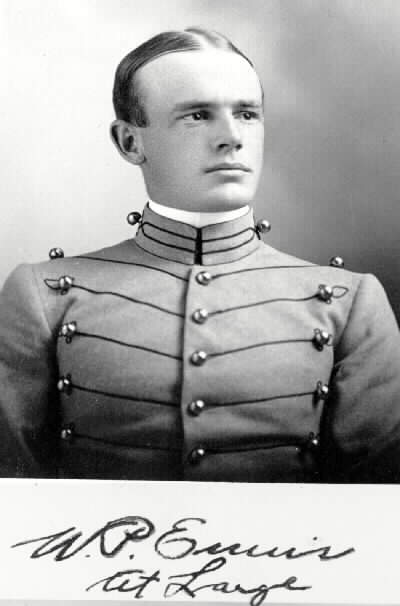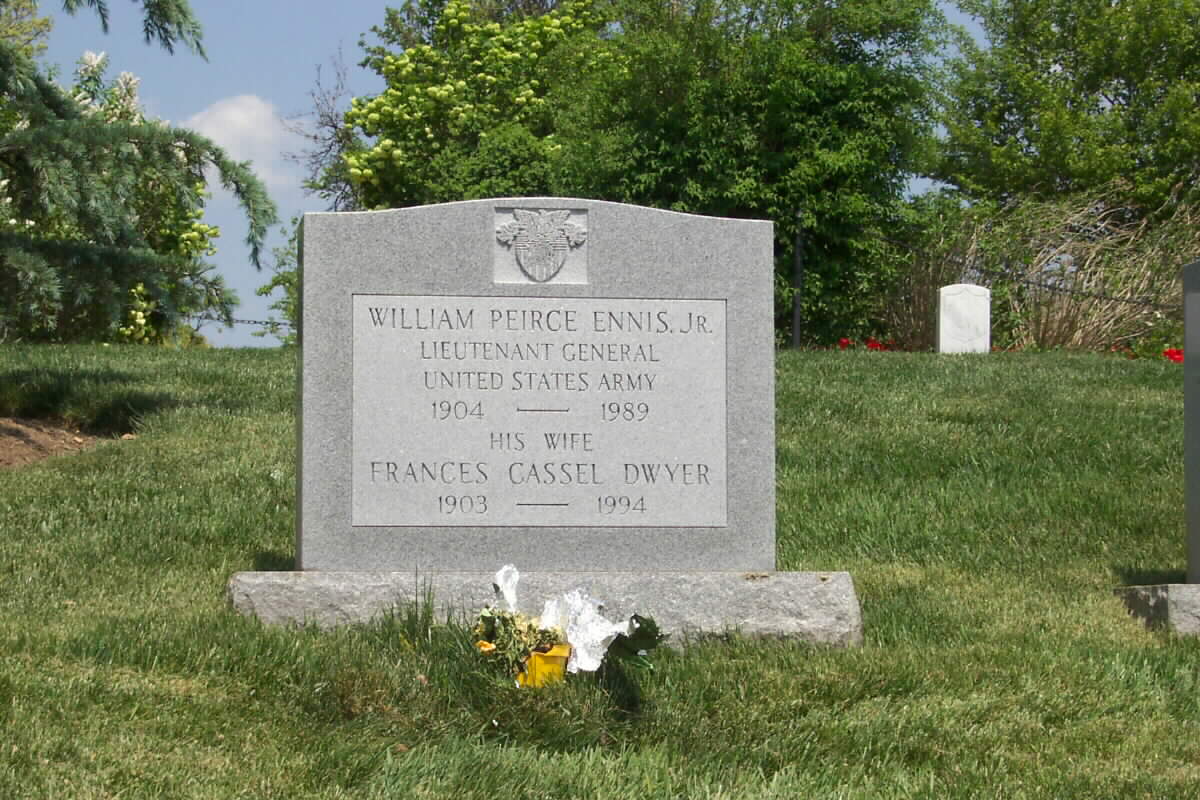Born at the Presidio of San Francisco, California, on 30 January 1878, William Peirce Ennis, son of an 1864 graduate, became one of the great field artillerymen. A big man with a big voice, he became known as “Roaring Bill” and “The Bull” but was a gentle giant who enjoyed working with young men and horses.
He entered the United States Military Academy in 1897, played on the hockey team, and won his letter in football, baseball, and track, where he held the record for the hammer throw. Upon graduation, he was commissioned in the Artillery Corps.
His first three years were spent at Fort Hamilton, New York. The next four were at West Point as an instructor with the Department of Ordnance and Gunnery. Next, he served with the 1st Field Artillery at the Remount Depot at Fort Reno, Oklahoma, where he became known to be the greatest trainer of Artillery horses. He was promoted to Captain of the 1st Field Artillery and then became Quartermaster by detail. After being relieved of this duty, he was assigned to the 4th Field Artillery at Fort Russell, Wyoming.
In 1912, he went to the Philippines with the 1st Artillery, then on to Honolulu, Hawaii, with the regiment. He was ordered to West Point in 1915 as Senior Assistant Instructor of Field Artillery and was promoted to major in 1917. Three months later, he was temporarily promoted to Lieutenant Colonel at Ft. Sill, Oklahoma, and served as Instructor and Director of the Department of Materiel at the School of Fire for Field Artillery.
He was awarded a Distinguished Service Medal for this work. In May of 1918, he was promoted to Colonel of the Field Artillery. That August he was promoted as temporary Brigadier General and commanded the 13th Field Artillery Brigade at Camp Lewis, Washington. Overseas, he spent three months in France, Italy, and England. Upon his return to the U.S., he served in the Office of the Chief of Staff in Washington, D.C. He was returned to the grade of Major while at Fort Sill, Oklahoma, as president of the Field Artillery Board. He then studied at the General Staff School, Fort Leavenworth, Kansas. Upon graduation, he was promoted to Lieutenant Colonel.
Next, he attended the Army War College in Washington, D.C., and, later, was assigned to the War Department, General Staff. He was assigned to the Panama Canal Zone in 1922, serving as a G-4 until 1925. Upon his return, he served as Assistant Commandant of the Field Artillery School at Fort Sill, Oklahoma. He remained there until 1929 when he was transferred to Fort Bragg, North Carolina, with the 2d Battalion of the 16th Field Artillery. His next three years were spent in Boston, Massachusetts, in the 1st Corps Area, General Staff, with troops. He served his last three years at Fort Bragg, North Carolina, and at Jacksonville, Florida, working on Organized Reserve assignments.
He retired in 1941 to Martha’s Vineyard, Massachusetts. He was active in local affairs and spent time fishing, sailing, and teaching. His “old boys” kept him updated on how his dreams for the Artillery were being fulfilled. He died at the age of 90 on 28 July 1968 at Vineyard Haven, Massachusetts.
HIS FATHER:
William Ennis of Rhode Island
- Cadet, United States Military Academy, 1 July 1860 (20)
- Second Lieutenant, 4th United States Artillery, 13 June 1864
- First Lieutenant, 8 May 1866
- Regimental Adjutant, 1 Apr to 5 October 1887
- Captain, 5 October 1887
- Major, 6th United States Artillery, 18 March 1899
- Artillery Corps, 2 Feb 1901
- Lieutenant Colone, 1 August 1901
- Assitant to the Adjutant Genreal, 30 July 1902
- Colonel, Artillery Corps, 17 August 1903
- Breveted First Luieutanant, 30 November 1864 for gallant and meritorious service in the battle of Franklin Tennessee and Captain 13 March 1865 for gallant service at Nashville Tennessee 15 and 16 December 1864.
Michael Robert Patterson was born in Arlington and is the son of a former officer of the US Army. So it was no wonder that sooner or later his interests drew him to American history and especially to American military history. Many of his articles can be found on renowned portals like the New York Times, Washingtonpost or Wikipedia.
Reviewed by: Michael Howard


